Anacampseros filamentosa subsp. filamentosa
Anacampseros filamentosa (Haw.) Sims subsp. filamentosa
Family: Anacampserotaceae
Common names: thready anacampseros, hare's food, rabbit's food, rabbit's foot (Eng); boesmansuring, haaskos, hasieskos, kleinhaaskos, kleinhasieskos, haasballetjies (Afr)
Introduction
Anacampseros filamentosa subsp. filamentosa is a distinctive and striking dwarf succulent , easily recognized by its dense covering of fine hairs. This plant belongs to the eudicot family Anacampserotaceae and is native to South Africa, where it thrives in arid environments.
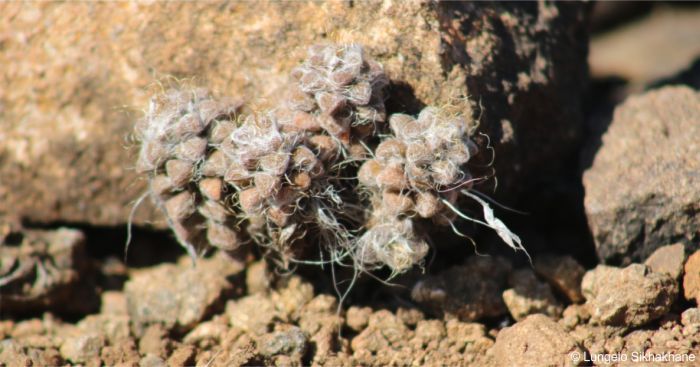
Fig.1. An Anacampseros filamentosa subsp. filamentosa plant growing in the wild.
Description
Description
Anacampseros filamentosa subsp. filamentosa is a perennial succulent dwarf shrub with prominent short columnar leaves that emerge from a swollen rootstock. The appearance of the plant varies depending on its growing environment. In its native habitat, the plants are shorter, growing up to 50-80 mm in height and exhibiting long, thin, cobweb-like hairs (ramentaceous stipules or axillary threads) that rise above the leaves. These hairs are scattered over the plant resulting in white woolliness covering the densely packed leaves. Plants in the nursery have fewer filaments or hairs, with fleshy and less clumped leaves, and they grow taller, reaching approximately 100 mm, possibly because they receive compost, regular watering and are exposed to less harsh conditions.
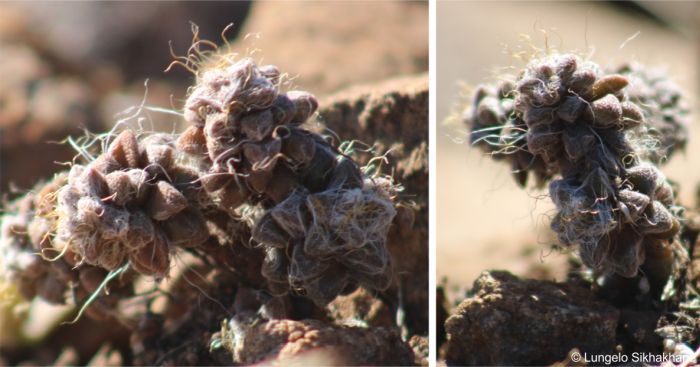
Fig.2. A close-up of an Anacampseros filamentosa subsp. filamentosa plant growing in the wild, showing the leaves and cobwebby hairs.
Anacampseros filamentosa subsp. filamentosa has basal rosettes of smooth triangular leaves that vary in length from 4-12 mm, with a width of 8 mm and thickness of 5 mm. The colour of the leaves differs with the environmental condition. In the natural areas, the leaves are greenish-brown, while in the garden or nursery, they are dark green to greenish-brown. The leaves are ovate-globose, gently curved with a noticeable chin-like recurving hump on both sides, and often have blunt tips. The leaves are sessile and alternate. The outer covering (epidermis) has a somewhat rough surface under the hair. The flowers are arranged in an umbel inflorescence that can reach up to 80 mm length and with 3-5 flowers. The flowers are actinomorphic (symmetrical), wheel-shaped with two caducous sepals and five petals. The petals are white, pink, or pale purple, oblong-lanceolate, up to 15 mm in length, and approximately 3.5 mm in width. There are typically 15 to 25 stamens present. The flowers are produced in summer, after rainfall. The flowers only open on sunny days and have a very short flowering period, lasting up to an hour. The seeds are warty, ranging from club-shaped to kidney-shaped, with an average length of 0.8 to 1.5 mm. The fruits is a capsule that is 7 to 12 mm in length.
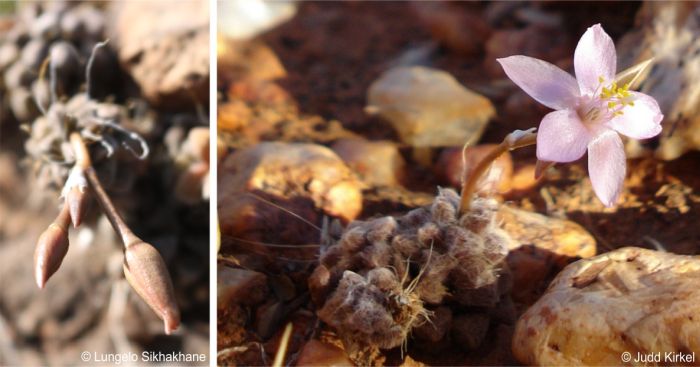
Fig.3. Anacampseros filamentosa subsp. filamentosa in bud (left) and in flower (right).
Conservation Status
Status
According to the 2015 assessment by the Red List of South African Plants, the plant is categorized as Least Concern (LC). However, Hilton-Taylor (1996) indicated that this species is declining due to agriculture practices. Furthermore, because of the plant poaching crisis in South Africa, its threat status should be reassessed because this is one of the species being targeted by poachers and plants were found in recently confiscated stolen plant material. The website iNaturalist, as of May 2021, is categorizing the species under Near Threatened.
Distribution and habitat
Distribution description
The genus Anacampseros is indigenous to southern Africa. Anacampseros filamentosa is distributed in northern Namibia inland and South Africa. Anacampseros filamentosa subsp. filamentosa is endemic to South Africa and is found in the Karoo region. The plant can be found in four provinces, namely the Eastern Cape, Free State, Northern Cape and North West, growing in Nama Karoo, grassland, arid savanna and thornveld. The plants are often found growing in semi-shaded areas, under larger shrubs and rocks. Anacampseros filamentosa subsp. filamentosa is difficult to find in its natural habitat, especially when not in flower, as it is well camouflaged and blends in with the background. The plant becomes dormant in winter and thrives in warm temperatures. The species is highly tolerant to drought and can withstand sporadic light frost.
In the Free State, particularly within the grassland biome, Anacampseros filamentosa subsp. filamentosa is notably found in the Gh8 Karroid Shrubland vegetation type, classified as a Critical Biodiversity Area (CBA1) and conserved in the Free State National Botanical Garden. It has been observed growing in rock-crevices on steep slopes, cliffs and bare rock faces. This area is characterized by isolated patches of dolerite geology. It has been also been observed in the Savanna (arid savanna) and Nama Karoo Biomes.
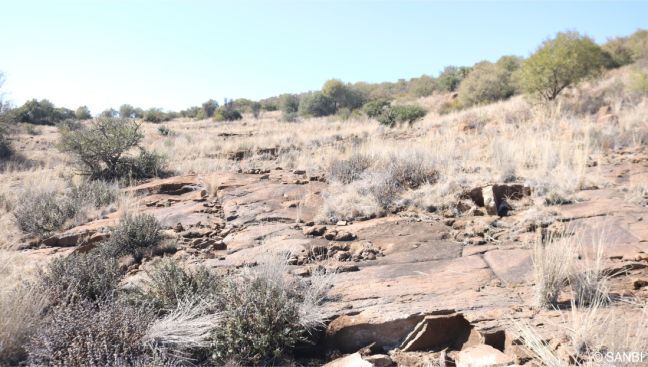
Fig.4. Karroid shrubland, the typical habitat of Anacampseros filamentosa subsp. filamentosa.
Derivation of name and historical aspects
History
The genus name Anacampseros, derived from a Greek word meaning 'to recover' or 'to turn back', refers to a mythical plant historically believed by herbalists to possess the ability to restore lost affection or rekindle romance. The species name filamentosa is Latin and means ‘many filaments’.
The Anacampserotaceae family was classified under Portulacaceae until February 2010 when it was redefined as a separate family. Anacampserotaceae currently consists of three genera: Anacampseros, Grahamia and Talinopsis. This reclassification was based on molecular and morphological data, and was formally described by Urs Eggli and Reto Nyffeler during their analysis of the polyphyly in the suborder Portulacineae. The genus Anacampseros includes approximately 100 species of perennial succulents.
The Anacampseros filamentosa group has 3 subspecies including subsp. filamentosa, subsp. namaquensis (H.Pearson & Stephens) G.D.Rowley, and subsp. tomentosa (A.Berger) Gerbaulet. Compared to the subsp. filamentosa, the other subspecies are less woolly.
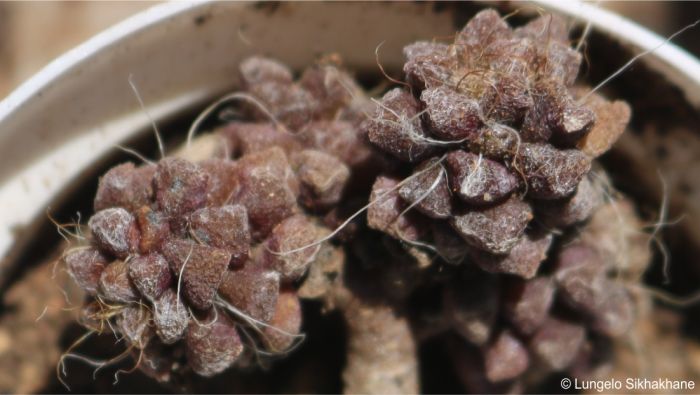
Fig.5. A close-up of a nursery-grown Anacampseros filamentosa subsp. filamentosa plant.
Ecology
Ecology
Anacampseros filamentosa has both male and female reproductive structures on the same plant, meaning it is hermaphroditic (can self-pollinate) and produces seeds within a cup formed by upright filaments. This means that a single plant can produce seeds on its own as well as through cross-pollination if other plants are nearby. Anacampseros filamentosa thrives in rock crevices and on bare rock faces, making it a key pioneer species. Its ability to colonize harsh environments allows it to break down rock and contribute to soil formation, stabilizing the habitat and preparing it for other plants and organisms.
In the Free State National Botanical Garden (GH8 Karroid Shrubland), Anacampseros filamentosa subsp. filamentosa has companion plants, namely Stomatium mustellinum and Cheilanthes eckloniana.
Uses
Use
Anacampseros filamentosa is used as an ornamental species because of its uniquely attractive appearance, and it is popular for indoor decoration. It also thrives in rock gardens, particularly in raised beds. Traditional health practitioners use the plant as an ingredient in mixtures believed to help rekindle lost love. The English and Afrikaans common names, hare's food, rabbit's food and haaskos suggest that animals from the Leporidae family, such as hares and rabbits, may occasionally nibble on the plant.

Fig.5. Anacampseros filamentosa subsp. filamentosa in the nursery.
Growing Anacampseros filamentosa subsp. filamentosa
Grow
Anacampseros filamentosa is adapted to an arid environment and they are slow growing. To grow this plant, it is recommended to use open, free-draining, mineral-rich, rocky or sandy soil, with minimal organic matter (such as peat or humus) added. Given the plant's susceptibility to rot, this type of soil allows the roots to breathe, leading to proper development of roots. Watering should be moderate, allowing the soil to dry up fully in between applications. This species prefers warm temperatures and should be protected from frost and cold breezes.
Anacampseros filamentosa can be propagated through germination of seeds, which can be sown in the spring. This could be done by adding well-draining soil to a seed germination tray, evenly distributing seeds over the surface and gently covering with a thin coating of soil mixture. The soil must be misted to keep it slightly damp, then placed it in an indirectly lit area with a temperature between 18 and 21°C. Germination usually takes one to three months.
Propagation by division can be achieved by separating offsets or pups from the main plant. It is recommended to wait a day to allow the divided stems to dry and form calluses over any cuts made during separation. The offset or pups should be planted in well-draining soil. This propagation method is advised to be done during warm temperatures in the spring season.
Stem cuttings can be used to propagate Anacampseros filamentosa during the summer. Cut a healthy stem from the parent plant, let it dry for a few days after cutting to promote the growth of callus. Place the cuttings in a container with gritty soil that drains properly. Give minimal watering until the cutting takes root.
The maintenance of the health of Anacampseros filamentosa subsp. filamentosa is essential, as proper exposure and ventilation will help prevent scarring, stunting, and even death of the plant. Plants are susceptible to pests, including red spider mites, mealybugs, and scale insects, as well as parasites. Red spider mites can be controlled by misting or watering the plants from above, while mealybugs can be treated by dabbing them with cotton swabs dipped in alcohol or soaking the succulent’s roots in a systemic insecticide. Cryptogamic diseases can be prevented with proper care, such as appropriate watering and air circulation, to avoid rot.
References
- EOL. Anacampseros filamentosa subsp. filamentosa. https://eol.org/pages/50131177. Accessed: 06 September 2024.
- Hilton-Taylor, C. 1996. Red Data List of Southern African Plants. National Botanical Institute, Pretoria
- iNaturalist. Anacampseros filamentosa ssp. filamentosa. https://www.inaturalist.org/taxa/597681-Anacampseros-filamentosa-filamentosa CLICK ON Status. Accessed 13 October 2024.
- Kirkel, J. 2007-04. Observation of Anacampseros filamentosa subsp. filamentosa, Northern Cape. iNaturalist. Online. https://www.inaturalist.org/observations/10807481.
- Latti, I. n.d. Anacampseros filamentosa subsp. filamentosa. Operation Wildflower. Online. https://www.operationwildflower.net/index.php/albums/183-genera-a/115-anacampseros/2475-anacampseros-filamentosa-subsp-filamentosa-judd-1-2475. Accessed 06/09/24.
- Lifestyle Seeds. Anacampseros filamentosa ssp. filamentosa. https://lifestyleseeds.co.za/shop/anacampseros-filamentosa/. .(Accessed 06 September 2024.
- LLifle The Encyclopedia of Succulents. Anacampseros filamentosa (n.d.) https://www.llifle.com/Encyclopedia/SUCCULENTS/Family/Portulacaceae/26902/Anacampseros_filamentosa. Accessed 06 September 2024.
- Plants of the World Online. Anacampseros filamentosa (Haw.) Sims. https://powo.science.kew.org/taxon/urn:lsid:ipni.org:names:698255-1/general-information. Accessed 06 September 2024.
- Rock Garden Plants. Anacampseros filamentosa (Haw.) Sims. https://flora.kadel.cz/cl/kvCard17235.html. Accessed 06 September 2024.
- Smith, G.F., Crouch, N.R. & Figueiredo, E. 2017. Field guide to succulents in southern Africa. Struik Nature, Cape Town.
- Von Staden, L. 2015. Anacampseros filamentosa (Haw.) Sims subsp. filamentosa. National Assessment: Red List of South African Plants. Accessed on 2024/09/06.
- Wikipedia. Anacampseros filamentosa. https://en.wikipedia.org/wiki/Anacampseros_filamentosa. Accessed 06 September 2024.
- Wikipedia. Anacampseros. https://en.wikipedia.org/wiki/Anacampseros. Accessed 06 September 2024.
- World of Succulents. How to grow and care for Anacampseros. https://worldofsucculents.com/grow-care-anacampseros/. Accessed: 06 September 2024.
Credits
Lungelo L. Sikhakhane and Loyd R. Vukeya
Free State National Botanical Garden
October 2024
Acknowledgements: the authors thank Mr. Lufuno Nenungwi, Senior Horticulturist at the Free State National Botanical Garden, for assisting in locating the plant and sharing his knowledge about it; and Judd Kirkel for making his image of a plant in flower available via iNaturalist.
Plant Attributes:
Plant Type: Succulent
SA Distribution: Eastern Cape, Free State, North West, Northern Cape
Soil type: Sandy, Loam
Flowering season: Early Summer
PH: Acid, Neutral
Flower colour: White, Pink, Mauve/Lilac
Aspect: Morning Sun (Semi Shade), Afternoon Sun (Semi Shade)
Gardening skill: Easy
Special Features:
Horticultural zones








Rate this article
Article well written and informative
Rate this plant
Is this an interesting plant?
Login to add your Comment
Back to topNot registered yet? Click here to register.